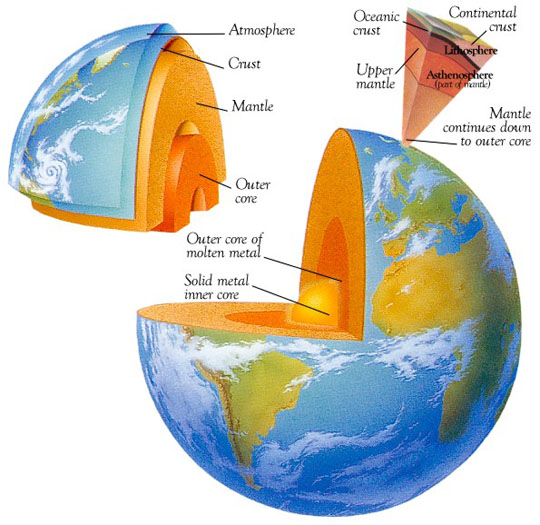
Scientists discover that the Earth’s core may not be what they originally thought; an iron-oxygen mix. Yes, the liquid outer core of the planet is made of molten iron, but there is something else in there too.
Based on laboratory tests, the core density is too low to be comprised of just iron, there has to be some other lighter elements in there as well. Scientists originally believed the lighter element was mostly oxygen, the most abundant element on the planet. It turns out they were wrong.
“We can’t sample the core directly, so we have to learn about it through improved laboratory experiments combined with modeling and seismic data,” explains the Carnegie Institution’s Yingwei Fei.
Using seismic observations and laboratory models, Fei and his colleagues were able to come to some surprising conclusions. By subjecting mixes of various alloys of iron and lighter materials to seismic shockwave tests while under conditions of temperature and pressure similar to that of the outer core, it turns out that the outer core isn’t an iron-oxygen mix.
“The research revealed a powerful way to decipher the identity of the light elements in the core. Further research should focus on the potential presence of elements such as silicon in the outer core,” says Fei.
For now more research has to be done, but it could turn out to be that silicon plays an important role is planet development and formation. The results are published in Nature, the International Weekly Journal of Science.
Reference: “Evidence for an oxygen-depleted liquid outer core of the Earth” by Haijun Huang, Yingwei Fei, Lingcang Cai, Fuqian Jing, Xiaojun Hu, Hongsen Xie, Lianmeng Zhang and Zizheng Gong, 23 November 2011, Nature.
DOI: 10.1038/nature10621
1 Comment
The earth’s core also has Lithium number 3 on the periodic table. Lithium is a very light metal.